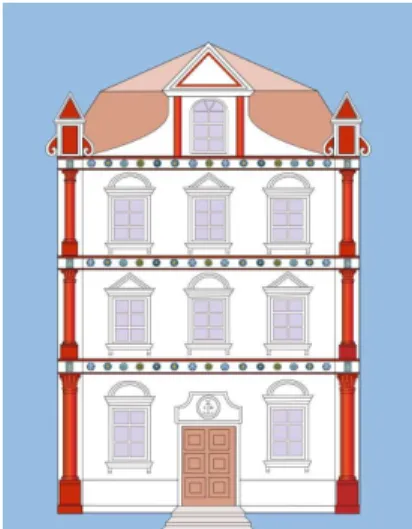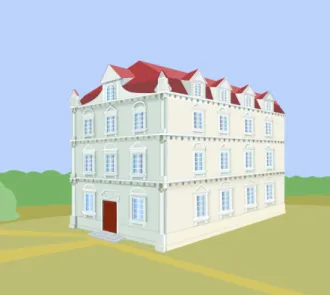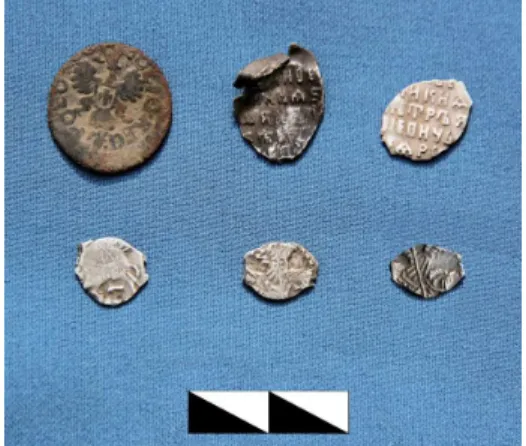Canadio-Byzantina 25 (January 2014)
9 REPORTSExcavations in Baturyn in 2013 In August of last year, the Canada-Ukraine archaeological expedition conducted its annual excavations in the Ukrainian town of Baturyn, Chernihiv province. The project is cosponsored by the Kowalsky Program for the Study of Eastern Ukraine at the Canadian Institute of Ukrainian Studies (CIUS), the Pontifical Institute of Mediaeval Studies (PIMS), the Shevchenko Scientific Society of America, and the Ucrainica Research Institute in Toronto. Prof. Zenon Kohut, Director of the CIUS Kowalsky Program, heads this undertaking. Dr. Viacheslav Skorokhod and Yurii Sytyi of the Chernihiv University lead the Baturyn expedition. Dr. Volodymyr Mezentsev (CIUS) and Prof. Martin Dimnik (PIMS) take part in this research and the publication of its findings. The 2013 expedition involved some 70 students, scholars, and volunteers from universities and museums in Chernihiv, Hlukhiv, and Sumy, as well as the Kyiv Mohyla Academy National University in Ukraine. Baturyn appeared on the historical stage as a border fortress of the Chernihiv principality in the Middle Byzantine era. From 1669 to 1708, it was the capital of the Cossack Hetman state and one of the major and vibrant towns in Ukraine. Baturyn reached its apex of urban development under the reign of the eminent Hetman Ivan Mazepa
(1687-1709). In 1708, the town residents supported Mazepa’s upraising against the growing control of Moscow over the Cossack realm. However the Russian army ravaged its capital and so doomed the insurrection to failure.
Last summer, the expedition continued excavating the site of Mazepa’s principal residence in Baturyn’s suburb of Honcharivka. In the late 1690s, the hetman commissioned a spacious fortified manor there with an ambitious three-story masonry palace. In 1708, this building was plundered and burned by Muscovite troops.
Research done on debris from Mazepa’s palace has revealed that its main elevation was adorned with brick semi-columns surmounted by limestone Corinthian capitals carved by local craftsmen. Initially, these order elements were painted in a bright red ochre colour and stood out distinctly against the plastered and whitewashed walls. Such a combination of red and white colours was applied to exterior decorations of several masonry monastic and residential structures in central Ukraine in the late 17th century. It derived from the colourful ornamentation of late gothic and mannerist architecture in Ukraine and the West.
In the first years of the 18th century, the red order elements of the Honcharivka palace were covered with a lime layer. Thus, the edifice’s exterior was completely
Figure 1: Main elevation
of Mazepa’s palace in the Baturyn suburb ofHoncharivka with red-painted semi-columns, ca. 1700
Figure 2: Painted
Corinthian semi-column set against the whitewashed palace façade withentablature adorned by glazed ceramic rosettes and a plaque bearing Mazepa’s coat of arms..
Canadio-Byzantina 25 (January 2014)
10whitewashed, probably in keeping with contemporary decorative practice in the architecture of the Hetmanate. Mazepa’s palace retained this appearance until its ruination in 1708.
Carved-stone ornamental details were rarely employed in buildings of the Cossack land. Their use at Mazepa’s main residence in Baturyn attests to the rich and distinctive nature of its embellishment.
Archaeological explorations have shown that this palace was extensively reveted with glazed and terracotta ceramic tiles or plaques. The entablature friezes were faced with eye-catching multicoloured glazed ceramic rosettes. Massive glazed and terracotta plaques featuring the relief coat of arms and monogram of Mazepa were probably also placed on these friezes above the capitals of corner semi-columns on the main façade. The floor of the hetman’s private quarters was paved with tiles of varied shapes and colours of glazing. On the basis of a 1744 drawing of this palace kept at the National Museum in Stockholm and recent archaeological finds, researchers have prepared new computer reconstructions of the
edifice’s exterior, its decorative elements, and the floor’s inlay pattern.
In all likelihood, Mazepa modelled the architectural design and adornment of his principal residence in Baturyn primarily on the fashionable baroque palaces, mansions, or villas of Poland and Lithuania. Archaeological research has established, however, that the Western-style outer ornamentation of the Honcharivka palace was supplemented by some local methods of painting, whitewashing, and revetment of the entablature friezes with polychrome glazed and terracotta rosettes and plaques characteristic of early modern ecclesiastical architecture of Kyiv. Perhaps these decorative ceramic details were manufactured by Kyivan expert tile-makers invited by Mazepa to Baturyn.
The comparatively large, multistoried, and lavishly embellished
Honcharivka palace was unmatched among the known brick dwellings of the Cossack elite. These were single- (rarely two-) storied structures with a different and more modest architectural design and adornment based on vernacular traditions.
To the west of the palace, the expedition partially excavated the remnants of a wooden dwelling and what appears to be a large service structure (15m x 5.5m) from the late 17th or early 18th century. These intriguing buildings require further archaeological research to define their layouts and functions. Examination of the numerous archaeological finds suggests that their inhabitants were either officers of the hetman’s guard or
Figure 3: reconstruction of the exterior of
Mazepa’s palace after its complete whitewashing before 1708
Figure 4: Floor inlay pattern of
figured glazed ceramic tiles at Mazepa’s residence inCanadio-Byzantina 25 (January 2014)
11 members of the Cossack elite serving at Mazepa’s court. After its destruction in 1708, these timber structures were abandoned and subsequently dismantled or fell into ruin.At the service structure site, the following artefacts were found: three silver ornaments, a copper wedding ring and three buttons, fragments of a fabric and a cord, three bronze clasps and four figured appliqués with relief patterns, incisions, and incrustations for decorating officer’s leather belts, 10 lead musket bullets, two flint pieces and a broken bronze screw from a flint-lock firearm, various iron and bone craftsman’s tools and household implements, many fragments of ornamented terracotta and glazed ceramic stove tiles, Cossack tobacco pipes, and painted pots and bowls of 17th to 18th-century domestic production. The finds also include crocks of imported fine German glazed tableware, the shard of a costly Bohemian glass wine goblet engraved with a floral motif, and 13 silver and copper Polish-Lithuanian and Russian coins from this period. For the first time, a copper Turkish coin was found in Baturyn—a mangir of Sultan Suleiman II struck at Istanbul in 1688.
In 2012-13, four bronze plates were discovered among the remnants of the service structure. Conceivably, these fragments are from the casing of a Catholic religious book, which was produced in Italy during the Renaissance or baroque eras and brought to the library of Mazepa’s palace in Honcharivka. An image skillfully engraved on one of these plates can be identified as a Renaissance-style figure of an angel sounding a trumpet. The angel may have been part of a scene of the Last Judgement depicted on the presumed bronze book casing.
These archaeological finds testify to the prosperity, enlightenment, and cultural interests of the Cossack elite at Mazepa’s court, as well as the penetration of European literature and art in Baturyn. These also indicate the high level of craftsmanship and decorative art in the hetman capital and its dynamic commercial connections with the West, Russia, and the
Ottoman Empire.
During the excavation of the site of an ordinary wooden dwelling within the Baturyn fortress burned in 1708, the broken head of a small terracotta female figure, likely a doll, was unearthed. Preliminary research suggests that it was fashioned by a local artist in a naïve realistic folk manner. This find
represents a truly unique piece of anthropomorphic ceramic sculpture, specifically the art of vernacular toys, of early modern Ukraine. A competing hypothesis, that this was an imported doll of the kind manufactured in 17th-century Germany, should also be considered before reaching any final conclusions.
Figure 5: Silver ornaments
with rock crystal and colour glass bead of local 17th-18th-century production discovered at Mazepa’s manor in 2012Figure 6: Cossack officers’
leather belts with bronze clasps and decorative appliqués found at the service structure in 2012-13 (photo collage)Figure 7: Copper Polish coin of
King John II Casimir (1648-68) and silver Russian coins of Tsar Peter I (1682-1725). 2012 excavations in HoncharivkaCanadio-Byzantina 25 (January 2014)
12The 2013 Canada-Ukraine archaeological expedition yielded valuable and informative finds in Baturyn, reconfirming the great significance of excavations in the town, and particularly of the remnants of Mazepa’s manor. Thanks to the work of our expedition, Baturyn has become the only former capital of the Cossack polity where systematic field explorations have been carried out annually for 13 years. These are vital to the study of the hitherto little-known culture and lifestyle of the Cossack elite. Excavations in Baturyn will continue in the summer of 2014.
Martin Dimnik and Volodymyr Mezentsev
Hypothetical computer reconstructions by V. Mezentsev, computer graphics by S. Dmytriienko, 2013, in figs. 1-4, 6.
Martin Dimnik and Volodymyr Mezentsev
Byzantine Studies Conference XXXIX Yale University, 31 October-3 November 2013
The 39 Annual Byzantine Studies Conference was held at Yale University in New Haven, CT, 31 October-3th November 2013. This year’s program featured papers covering a broad range of interdisciplinary Byzantine topics by scholars from North America and abroad. No weather disruptions this year! We were made welcome not only by the cool and picturesque autumn weather, but also by our hosts, led by Vasileios Marinis and Rob Nelson.
The conference program featured a wide variety of sessions ranging in topic from the Caucasus, aurality, formation and definition of the individual and of saint’s lives, place and space, manuscript culture, pain. A spectrum of methodological approaches is evident, perhaps, in this brief list, and it is surely a sign of a field open to new questions and still firm in its fundamental approaches. Highlights included, moreover, a manuscript exhibition in the Beinecke Library that revealed, through the kind mediation of Yale students and faculty, some real Byzantine treasures in that collection. The reception following, also in the Library, was a memorable space for meeting friends and colleagues, and for catching up on another year. The nearby Yale University Art Gallery provided extraordinary regeneration for conference goers, with the stunning new display of the Dura Europos material.
Again this year, the program committee accepted submissions of complete panel proposals and is encouraging similar proposals for the coming meeting. A two-part session on the White Monastery project in Egypt was a stimulating extension of this new format possibility. The International Center for Medieval Art (ICMA) again sponsored a session, with funding from the Kress Foundation, dedicated to a recent book by Alex Nagel,
Medieval Modern.
Figure 8: Fragment
of a ceramic female statuette or doll of the late 17th-early 18th century discovered at the timber dwelling in the Baturyn fortressFigure 9: Obverse
and reverse of the 1688 copper Turkish coin of Sultan Suleiman II found at the service structure in 2013


